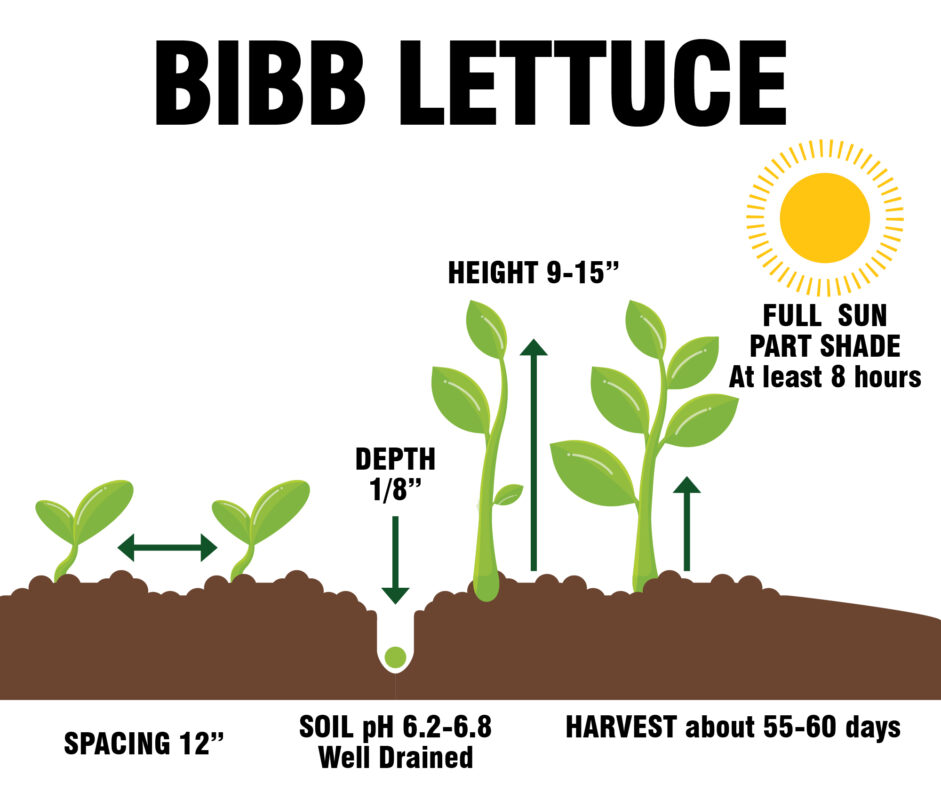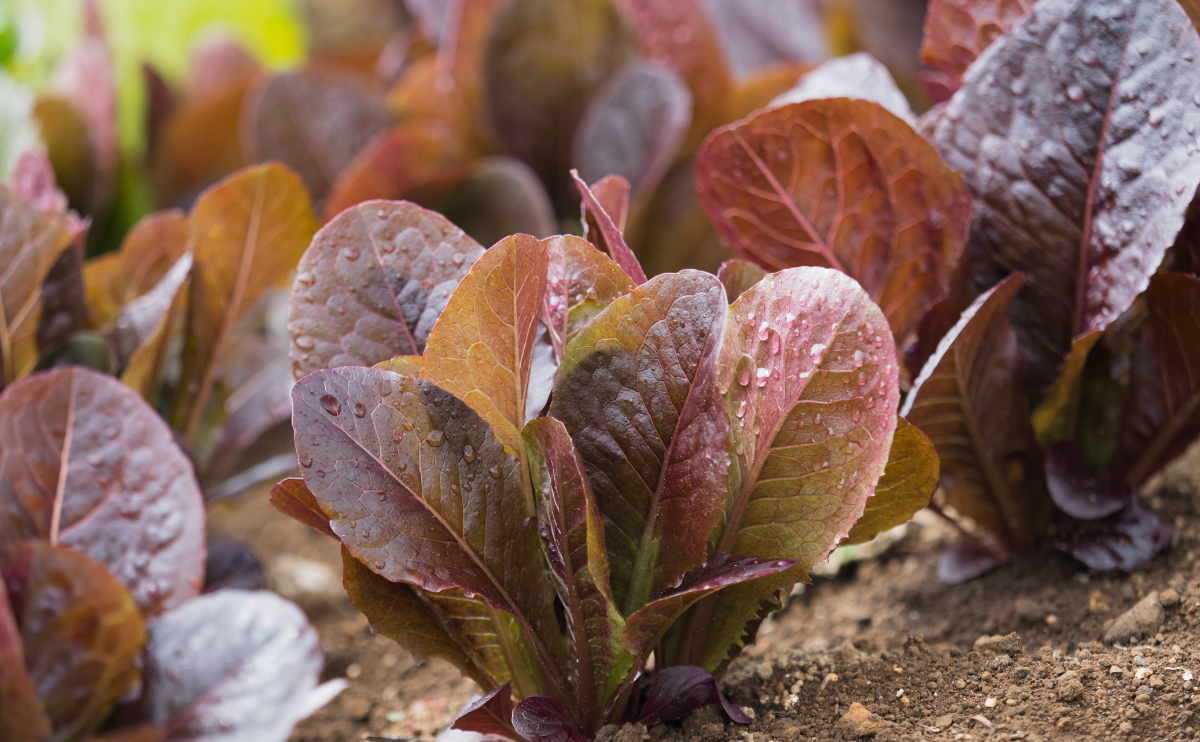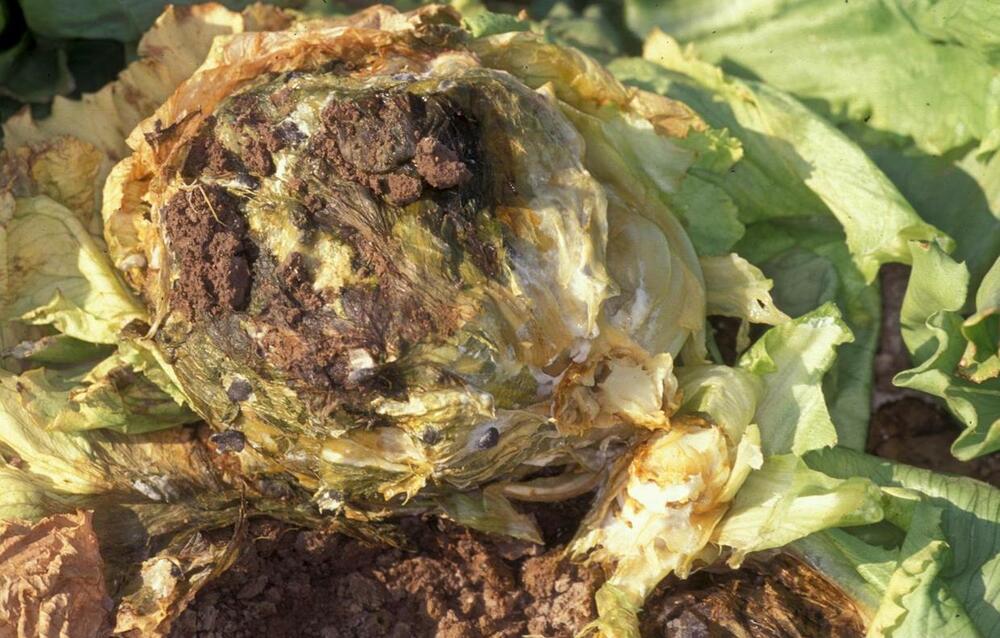Lettuce Romaine Cimarron Red Lactuca Sativa is a heirloom hardy annual lettuce that dates back to the 18th century. Lettuce Romaine Cimarron Red seeds germinate in 7-10 days, and it takes only 21 days to baby leaf and 60 days to full size maturity. Lettuce Romaine Cimmaron Red produces cylindrical shaped, upright, tightly folded heads of crisp, deep-red leaves.
Lettuce Romaine Cimarron Red has a good flavor, crisp texture, and it is the one of the slowest lettuces to bolt. Easily grown from Lactuca Sativa seeds in spring, summer, or fall, Cimarron Lettuce is heat and cold tolerant, so it can be grown all season long for prolonged harvest. The tender and crisp leaves of Lettuce Romaine Cimarron Red are great for salads and sandwiches.

| Common Name | Lettuce, garden lettuce |
| Botanical Name | Lactuca sativa |
| Family | Asteraceae |
| Plant Type | Annual, vegetable |
| Size | 6–12 in. tall and wide |
| Sun Exposure | Full sun, partial sun |
| Soil Type | Loamy, rich, well-drained |
| Soil pH | Acidic, neutral (6 to 7) |
| Bloom Time | Seasonal |
| Hardiness Zones | 2a–11b (USDA) |
| Native Area | Mediterranean |

When to Plant?
This will be determined by your planting zone. There is a final frost date for each area. As a result, you can plan your gardening activities around this date. Check our Frost Dates Across North America: First & Last Frost Dates Chart. However, the date will not be the same for every plant.
How to Plant
Lettuce grows best in full sun, though excessive heat can cause plants to bolt to seed, or leaves to wilt. For an early start, seeds can be started in flats 4 weeks prior to the last frost and transplanted outdoors in mid to late spring. If growing in summer, select a partially shaded location, or one that receives primarily eastward exposure to mitigate the potentially damaging effects of excessive heat upon lettuce.
Growing lettuce in a container is a good option to help protect it from pests. You also can keep the container in a convenient spot for harvesting. Make sure to check the space requirements for your particular lettuce variety. In general, a container that’s six to 12 inches across should suffice. Make sure it has drainage holes. Unglazed clay is an ideal container material, as it will allow excess soil moisture to escape through its walls.

How to Cultivate
Whether you’re planting in containers or in the ground, make sure the seeds are only lightly covered in soil. Keep the soil evenly moist but not soggy as the seeds germinate, which should take around seven to 10 days. The soil temperature should be at least 40 degrees Fahrenheit and ideally between 55 and 65 degrees Fahrenheit.
How to Harvest
The best time of day to harvest is in the morning when the lettuce is still plump and the sun hasn’t caused it to wilt at all. You can harvest cut-and-come-again lettuce types as soon as the outer leaves reach about 6 inches long. Trim off these outer leaves, leaving the inner leaves to continue to mature. If you are growing head lettuce, be sure to harvest before the head starts to elongate. That means it’s ready to bolt, and the flavor will suffer. It can be stored in the refrigerator in a plastic bag for up to 10 days.
Hydroponics
Germination: Start by soaking the seeds in water for 24 hours to help speed up the germination process. After soaking, place the seeds in a damp paper towel and put it in a plastic bag. Keep the bag in a warm, dark place for 2-3 days until the seeds have sprouted. Once sprouted, place the seeds in your hydroponic system.
pH range: The pH range for growing Cimarron Red Romaine hydroponically should be between 5.5 and 6.5. Keep an eye on the pH levels and adjust as necessary.
EC: The EC (electrical conductivity) level for growing Cimarron Red Romaine hydroponically should be between 1.5 and 2.5 mS/cm. This will ensure that your plants are getting the proper nutrients they need to grow.
PPM: The recommended PPM (parts per million) range for growing Cimarron Red Romaine hydroponically is between 700 and 1400 ppm.
Humidity: The humidity levels for growing Cimarron Red Romaine hydroponically should be between 50% and 70%. This will help prevent moisture-related problems like mold and fungus.
Light hours: Cimarron Red Romaine requires around 12 to 16 hours of light per day. This can be achieved using LED grow lights or natural sunlight. Make sure to give the plants enough light, but not too much as this can cause heat stress.
Temperature air: The ideal air temperature for growing Cimarron Red Romaine hydroponically is between 60°F and 70°F (15.5°C and 21°C). Keep the temperature consistent throughout the day and night.
Temperature water: The water temperature for growing Cimarron Red Romaine hydroponically is between 65°F and 75°F (18°C and 24°C). Keep the water temperature consistent to avoid stressing the plants.
Overall, growing Cimarron Red Romaine hydroponically can be a rewarding experience, and following these guidelines can help you grow healthy and vibrant plants.




